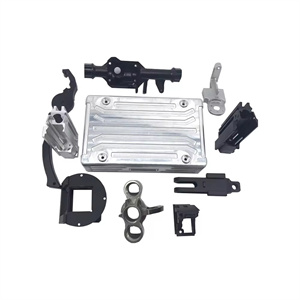CNC Milling is a milling machine controlled by digital signals from an electronic meter. It is an automatic processing equipment developed on the basis of general milling machines, with similar processing techniques and structures. CNC milling machines are divided into two categories: those without tool libraries and those with tool libraries, among which CNC milling machines with tool libraries are also known as machining centers.
The main working principle of CNC Milling is to use a rotating cylindrical cutting head and multiple chip groove milling cutters (usually referred to as end mills or end mills), which move along different axes, to process prismatic parts such as narrow spaces, grooves, outer profiles, etc.
CNC Milling has a wide range of applications in the manufacturing industry, especially in areas that require high-precision and high-efficiency machining, such as medical equipment, aerospace components, etc. CNC precision machining technology has the advantages of high precision, high efficiency, flexibility, and automation, which can meet the machining needs of various precision components, improve production efficiency and economic benefits.
In addition, precision carving machines can also be seen as a type of CNC machine tool, which operates stably and reliably, has good processing quality, high efficiency, and is easy to operate and maintain. Precision engraving machines typically use small cutting tools, high-power, and high-speed spindle motors, suitable for non-contact cutting and drilling of metal or non-metallic sheets and pipes.
Numerical control milling of aluminum is a widely used machining technology in the manufacturing industry.
Advantages:
High speed: The excellent cutting performance of aluminum enables CNC milling to be carried out at a faster speed, improving production efficiency.
High precision: capable of accurately machining complex shapes and structures, meeting various high-precision requirements.
Process characteristics:
Tool selection: Diamond tools or coated hard alloy tools are preferred to reduce tool wear and improve machining surface quality.
For example, when processing aluminum alloy parts in the aerospace industry, high-quality diamond cutting tools are selected.
Cutting parameters: Typically, higher cutting speeds and larger feed rates are used.
But for thin-walled aluminum parts, to prevent deformation, it may be necessary to appropriately reduce cutting parameters.
Clamping method: Ensure that the workpiece is firmly clamped and avoid excessive clamping force causing deformation of the workpiece.
Quality Control:
Surface roughness: Control surface roughness through reasonable process parameters and tool selection to meet design requirements.
Dimensional accuracy: Utilize the precision control and measurement methods of the CNC system to ensure the dimensional accuracy of the parts.
Application field:
Automobile manufacturing: such as engine cylinder blocks, wheel hubs, and other parts.
Communication devices, such as phone cases and base station components.
